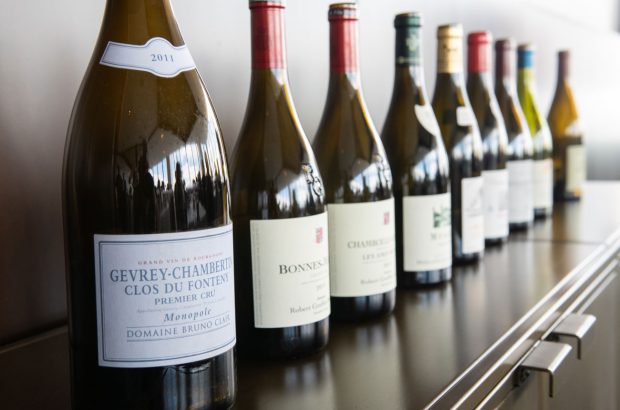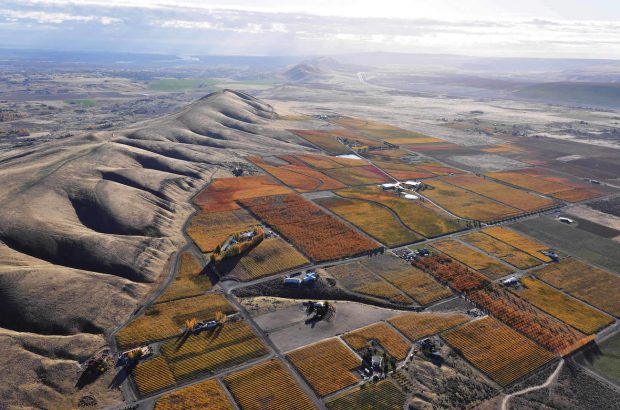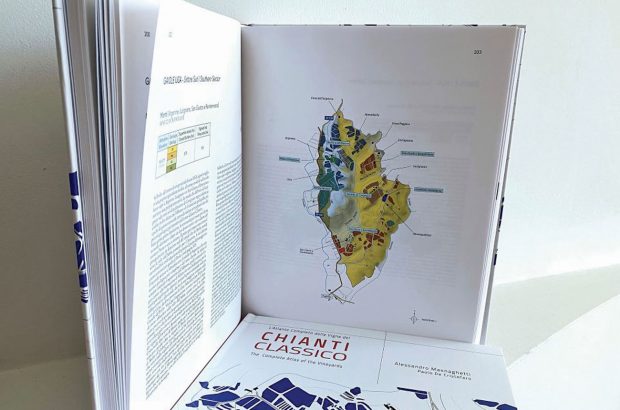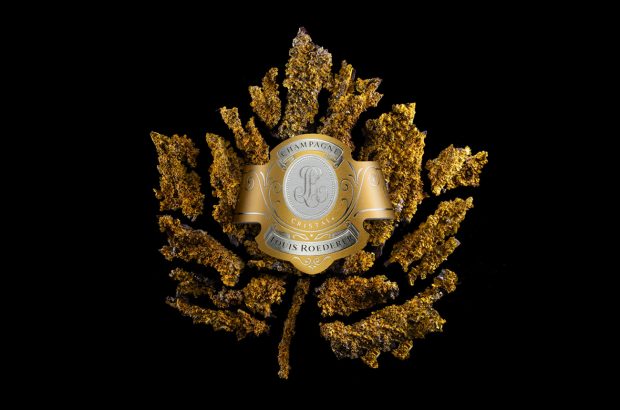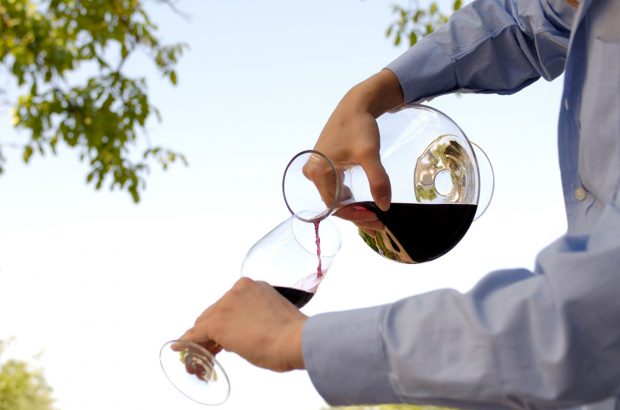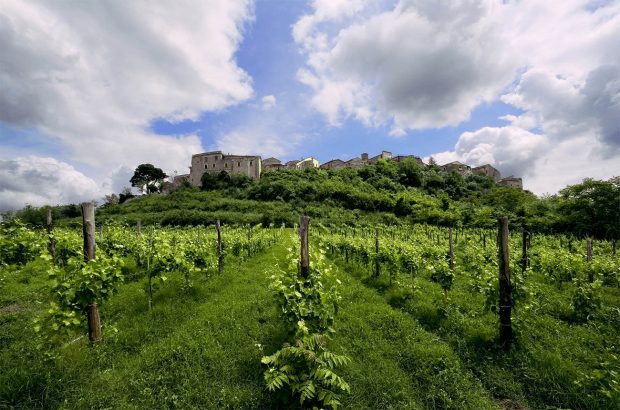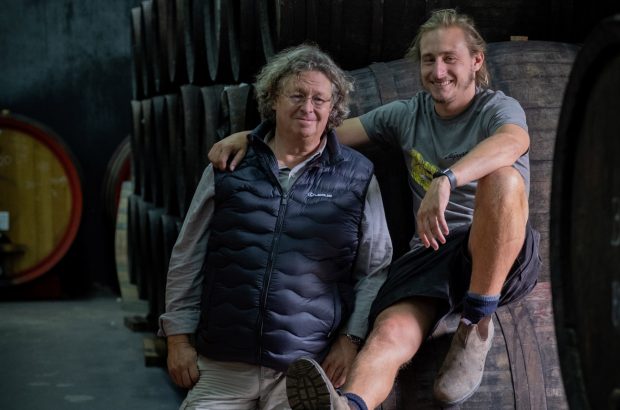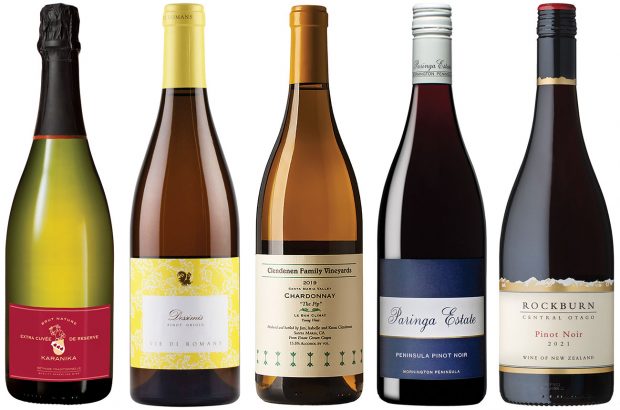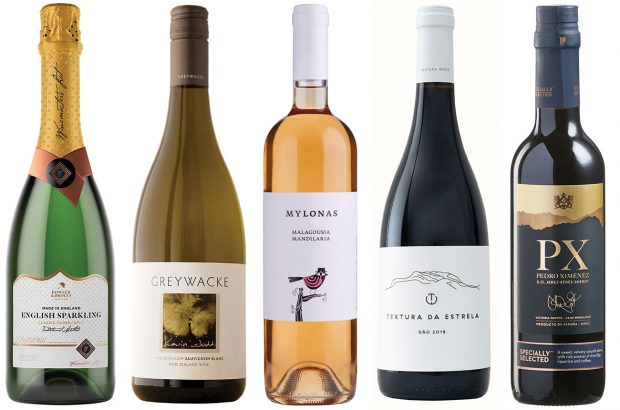There are two words that crop up more than any other when exploring Côte-Rôtie in the Northern Rhône: brune (brown or brunette in English) and blonde (blonde).
They’re used in cuvée names, names of lieux-dits, regional designations and even local legends. Effectively what they refer to is the two main soil types: dark brown mica schist (brune) and pale yellow gneiss (blonde).
Scroll down to see tasting notes and scores for 28 Côte-Rôtie wines
The way these terms are used can be confusing to English speakers. Once this is clarified, we’ll take a look at these two different soil types and how they influence wine style, longevity and quality.
There’s some argument as to how important these soils types are when it comes to the resulting style of Côte-Rôtie, but it’s a convenient starting point for understanding the appellation.
Confusing terminology
Today, there are 73 official lieux-dits in Côte-Rôtie. Looming over the town of Ampuis that sits at the heart of the appellation there are two lieux-dits that sit almost side-by-side: one is called Côte Brune, the other Côte Blonde.
{"content":"PHA+QnV0IGJlY2F1c2UgdGhlIGduZWlzcyBiZWRyb2NrIHJ1bnMgZnJvbSBsaWV1LWRpdCBDw7R0ZSBCbG9uZGUgc291dGh3YXJkcywgYW5kIHRoZSBzY2hpc3QgcnVucyBmcm9tIGxpZXUtZGl0IEPDtHRlIEJydW5lIG5vcnRod2FyZHMsIG9mdGVuIHRoZSBlbnRpcmUgc291dGhlcm4gaGFsZiBvZiB0aGUgYXBwZWxsYXRpb24gaXMgcmVmZXJyZWQgdG8gbG9jYWxseSBhcyDigJh0aGUgQ8O0dGUgQmxvbmRl4oCZIGFuZCB0aGUgZW50aXJlIG5vcnRoZXJuIGhhbGYgaXMgY2FsbGVkIOKAmHRoZSBDw7R0ZSBCcnVuZeKAmS48L3A+CjxwPlRoaXMgY2FuIGNyZWF0ZSBjb25mdXNpb24sIHNvIGZvciB0aGUgc2FrZSBvZiBjbGFyaXR5IEnigJlsbCB1c2UgdGVybXMgbGlrZSDigJhibG9uZGUgc29pbHPigJkgb3Ig4oCYYnJ1bmUgc2lkZeKAmSBpbnN0ZWFkLCBhbmQgc2F2ZSBDw7R0ZSBCbG9uZGUgYW5kIEPDtHRlIEJydW5lIGZvciByZWZlcnJpbmcgdG8gdGhlIHNwZWNpZmljIGxpZXV4LWRpdHMuPC9wPgo8aDM+VGhlIG5hdHVyZSBvZiB0aGUgc29pbHM8L2gzPgo8cD5XaGVuIGl0IGNvbWVzIHRvIGdlb2xvZ3ksIGJvdGggdGhlIGJsb25kZSBhbmQgdGhlIGJydW5lIHNvaWxzIGNvbWUgZnJvbSBhIHNpbWlsYXIgZ2VvbG9naWNhbCBlcmEsIGdvaW5nIGJhY2sgMzAwIG1pbGxpb24geWVhcnMuIFRoZSBkaWZmZXJlbmNlIHdhcyBjcmVhdGVkIHRocm91Z2ggdGhlIGFtb3VudCBvZiBwcmVzc3VyZSBhbmQgdGVtcGVyYXR1cmUgdGhlIHJvY2sgZXhwZXJpZW5jZWQgb3ZlciB0aW1lLjwvcD4KPGRpdiBjbGFzcz0iYWQtY29udGFpbmVyIGFkLWNvbnRhaW5lci0tbW9iaWxlIj48ZGl2IGlkPSJwb3N0LWlubGluZS0zIiBjbGFzcz0iaXBjLWFkdmVydCI+PC9kaXY+PC9kaXY+CjxwPkphY3F1ZXMgR3JhbmdlLCB0ZWNobmljYWwgZGlyZWN0b3IgYW5kIGNoaWVmIHdpbmVtYWtlciBhdCBEZWxhcywgd29ya2VkIGhpcyBmaXJzdCB2aW50YWdlIGluIHRoZSBSaMO0bmUgaW4gMTk4MSBhbmQgdW5kZXJzdGFuZHMgdGhpcyBwbGFjZSBiZXR0ZXIgdGhhbiBtb3N0LiDigJhXZSBhcmUgaW4gbm8gd2F5IHNlZWluZyBkaWZmZXJlbmNlcyBhcyBsYXJnZSBhbmQgYXMgc3RyaWtpbmcgYXMgd2hhdCB3ZSBzZWUgaW4gQ2jDonRlYXVuZXVmLWR1LVBhcGXigKYgb3IgaW4gSGVybWl0YWdlLOKAmSBoZSBzYXlzLiDigJhCZXR3ZWVuIHRoZSBwdXJlIGdyYW5pdGUgb2YgTGVzIEJlc3NhcmRzIGFuZCBMZSBNw6lhbCwgd2hpY2ggYXJlIGluIGRpZmZlcmVudCBnZW9sb2dpY2FsIGVyYXMgbWlsbGlvbnMgb2YgeWVhcnMgYXBhcnQuIFdpdGggdGhlIGJydW5lIGFuZCB0aGUgYmxvbmRlLCB3ZSBoYXZlIHNvaWxzIG9mIHRoZSBzYW1lIG9yaWdpbiwgd2hpY2ggYXJlIGRpZmZlcmVudCBvbmx5IGluIGRldGFpbC7igJk8L3A+CjxkaXYgaWQ9ImF0dGFjaG1lbnRfNDY0OTYwIiBzdHlsZT0id2lkdGg6IDY0MHB4IiBjbGFzcz0id3AtY2FwdGlvbiBhbGlnbmNlbnRlciI+PGltZyBhcmlhLWRlc2NyaWJlZGJ5PSJjYXB0aW9uLWF0dGFjaG1lbnQtNDY0OTYwIiBjbGFzcz0ibGF6eWxvYWQgYmx1ci11cCB3cC1pbWFnZS00NjQ5NjAgc2l6ZS1sYXJnZSIgc3JjPSJodHRwczovL3d3dy5kZWNhbnRlci5jb20vd3AtY29udGVudC90aGVtZXMvc2ltYmEtdGhlbWUvYXNzZXRzL2ltYWdlcy9wbGFjZWhvbGRlci5wbmciIGRhdGEtc3JjPSJodHRwczovL2tleWFzc2V0cy50aW1laW5jdWsubmV0L2luc3BpcmV3cC9saXZlL3dwLWNvbnRlbnQvdXBsb2Fkcy9zaXRlcy8zNC8yMDIxLzA5L1NjaGlzdC1vbi10aGUtbGVmdC1nbmVpc3Mtb24tdGhlLXJpZ2h0LTYzMHg0MTcuanBnIiBhbHQ9IkNvdGUgUm90aWUgc29pbHMiIHdpZHRoPSI2MzAiIGhlaWdodD0iNDE3IiBkYXRhLXNpemVzPSJhdXRvIiBkYXRhLXNyY3NldD0iaHR0cHM6Ly9rZXlhc3NldHMudGltZWluY3VrLm5ldC9pbnNwaXJld3AvbGl2ZS93cC1jb250ZW50L3VwbG9hZHMvc2l0ZXMvMzQvMjAyMS8wOS9TY2hpc3Qtb24tdGhlLWxlZnQtZ25laXNzLW9uLXRoZS1yaWdodC02MzB4NDE3LmpwZyA2MzB3LCBodHRwczovL2tleWFzc2V0cy50aW1laW5jdWsubmV0L2luc3BpcmV3cC9saXZlL3dwLWNvbnRlbnQvdXBsb2Fkcy9zaXRlcy8zNC8yMDIxLzA5L1NjaGlzdC1vbi10aGUtbGVmdC1nbmVpc3Mtb24tdGhlLXJpZ2h0LTMwMHgxOTguanBnIDMwMHcsIGh0dHBzOi8va2V5YXNzZXRzLnRpbWVpbmN1ay5uZXQvaW5zcGlyZXdwL2xpdmUvd3AtY29udGVudC91cGxvYWRzL3NpdGVzLzM0LzIwMjEvMDkvU2NoaXN0LW9uLXRoZS1sZWZ0LWduZWlzcy1vbi10aGUtcmlnaHQtMTM1eDg5LmpwZyAxMzV3LCBodHRwczovL2tleWFzc2V0cy50aW1laW5jdWsubmV0L2luc3BpcmV3cC9saXZlL3dwLWNvbnRlbnQvdXBsb2Fkcy9zaXRlcy8zNC8yMDIxLzA5L1NjaGlzdC1vbi10aGUtbGVmdC1nbmVpc3Mtb24tdGhlLXJpZ2h0LTMyMHgyMTIuanBnIDMyMHcsIGh0dHBzOi8va2V5YXNzZXRzLnRpbWVpbmN1ay5uZXQvaW5zcGlyZXdwL2xpdmUvd3AtY29udGVudC91cGxvYWRzL3NpdGVzLzM0LzIwMjEvMDkvU2NoaXN0LW9uLXRoZS1sZWZ0LWduZWlzcy1vbi10aGUtcmlnaHQtNjIweDQxMC5qcGcgNjIwdywgaHR0cHM6Ly9rZXlhc3NldHMudGltZWluY3VrLm5ldC9pbnNwaXJld3AvbGl2ZS93cC1jb250ZW50L3VwbG9hZHMvc2l0ZXMvMzQvMjAyMS8wOS9TY2hpc3Qtb24tdGhlLWxlZnQtZ25laXNzLW9uLXRoZS1yaWdodC05MjB4NjA5LmpwZyA5MjB3LCBodHRwczovL2tleWFzc2V0cy50aW1laW5jdWsubmV0L2luc3BpcmV3cC9saXZlL3dwLWNvbnRlbnQvdXBsb2Fkcy9zaXRlcy8zNC8yMDIxLzA5L1NjaGlzdC1vbi10aGUtbGVmdC1nbmVpc3Mtb24tdGhlLXJpZ2h0LTEyMjB4ODA3LmpwZyAxMjIwdywgaHR0cHM6Ly9rZXlhc3NldHMudGltZWluY3VrLm5ldC9pbnNwaXJld3AvbGl2ZS93cC1jb250ZW50L3VwbG9hZHMvc2l0ZXMvMzQvMjAyMS8wOS9TY2hpc3Qtb24tdGhlLWxlZnQtZ25laXNzLW9uLXRoZS1yaWdodC5qcGcgMTMwMHciIHNpemVzPSIobWF4LXdpZHRoOiA2MzBweCkgMTAwdncsIDYzMHB4IiAvPjxwIGlkPSJjYXB0aW9uLWF0dGFjaG1lbnQtNDY0OTYwIiBjbGFzcz0id3AtY2FwdGlvbi10ZXh0Ij5TY2hpc3QgKGxlZnQpLCBnbmVpc3MtKHJpZ2h0KTwvcD48L2Rpdj4KPGRpdiBjbGFzcz0iYWQtY29udGFpbmVyIGFkLWNvbnRhaW5lci0tbW9iaWxlIj48ZGl2IGlkPSJwb3N0LWlubGluZS00IiBjbGFzcz0iaXBjLWFkdmVydCI+PC9kaXY+PC9kaXY+CjxwPkRpZmZlcmVudCB0aGV5IGFyZSwgaG93ZXZlciwgYW5kIG5vdCBqdXN0IGluIGNvbG91ciwgYXMgS8OpdmluIEdhcm9uIGZyb20gRG9tYWluZSBHYXJvbiBleHBsYWlucy4g4oCYVGhlIGJsb25kZSBzaWRlIGlzIHZlcnkgd2VsbC1kcmFpbmluZywgcXVpdGUgYWNpZOKApiBpdOKAmXMgbXVjaCBwYWxlciBpbiBjb2xvdXIsIHNhbmR5LCBzdG9ueSwgdGhlcmXigJlzIGhhcmRseSBhbnkgY2xheSBvbiB0aGUgYmxvbmRlIHNpZGUuIE9uIHRoZSBjb250cmFyeSwgb24gdGhlIGJydW5lIHNpZGUsIHdpdGggaXRzIHNjaGlzdCBhbmQgbWljYSBzY2hpc3QsIHRoZSBiZWRyb2NrIGlzIGhlYXZpbHkgZGVjb21wb3NlZCwgdGhlIHJvb3RzIGdvIGludG8gaXQgZWFzaWx5LCB0aGUgc29pbHMgYXJlIGJyb3duLCBhbmQgdGhlIG1haW4gZGlmZmVyZW5jZSBpcyBpdCBoYXMgbW9yZSBjbGF5LuKAmTwvcD4KPHA+UGllcnJlIEJ1cmdhdWQgb2YgRG9tYWluZSBCdXJnYXVkIGFkZHMgdGhhdCDigJhpdOKAmXMgbm90IGp1c3QgdGhlIHR5cGUgb2YgYmVkcm9jayB0aGF0IGNvdW50c+KApiB0aGVyZeKAmXMgYWxzbyB0aGUgdHlwZSBvZiBhcmFibGUgZWFydGggd2UgaGF2ZSB0b28sIHRoYXTigJlzIHRvIHNheSB0aGUgYW1vdW50IG9mIGNsYXksIHRoZSBsZXZlbCBvZiBkZWNvbXBvc2l0aW9uIG9mIHRoZSBiZWRyb2NrLCBhbmQgdGhlIGFtb3VudCBvZiBsaW1lc3RvbmUgaW4gdGhhdCBhcmFibGUgZWFydGgs4oCZIGFuZCB0aGlzIGNhbiB2YXJ5IHdpdGhpbiBpbmRpdmlkdWFsIHBhcmNlbHMuIFRvIGhpbSwgdGhlIHRpZHkgZGl2aXNpb24gYmV0d2VlbiB0aGUgYmxvbmRlIGFuZCBicnVuZSBzaWRlcyBpcyBhIOKAmGJpZyBzaW1wbGlmaWNhdGlvbuKAmS48L3A+CjxkaXYgY2xhc3M9ImFkLWNvbnRhaW5lciBhZC1jb250YWluZXItLW1vYmlsZSI+PGRpdiBpZD0icG9zdC1pbmxpbmUtNSIgY2xhc3M9ImlwYy1hZHZlcnQiPjwvZGl2PjwvZGl2Pgo8aDM+QnJ1bmUgc3R5bGVzIGFuZCBibG9uZGUgc3R5bGVzPC9oMz4KPHA+TmV2ZXJ0aGVsZXNzLCB0aGUgdHdvIG1haW4gc29pbCB0eXBlcyBvZiBDw7R0ZS1Sw7R0aWUgYXJlIGJyb2FkbHkgYXNzb2NpYXRlZCB3aXRoIGRpZmZlcmVudCBzdHlsZXMgb2Ygd2luZSwgYW5kIHRoaXMgaXMgbWFpbmx5IGRvd24gdG8gdGhlIGFtb3VudCBvZiBjbGF5IGFuZCBob3cgdGhhdCBhZmZlY3RzIHRoZSB2aW5lLiDigJhUaGUgdHdvIHNvaWxzIGRvbuKAmXQgYWN0IGV4YWN0bHkgdGhlIHNhbWUs4oCZIHNheXMgR3JhbmdlLiDigJhJZiBJIGhhZCB0byBkZXRlcm1pbmUgYSBwcmluY2lwYWwgY3JpdGVyaW9uIHRoYXQgZGlmZmVyZW50aWF0ZXMgdGhlIHR3bywgaXTigJlzIGhvdyB0aGUgcGxhbnQgdGFrZXMgdXAgd2F0ZXIu4oCZPC9wPgo8cD5WaW5lcyBwbGFudGVkIG9uIHRoZSBoZWF2aWVyIGNsYXkgc29pbHMgYXNzb2NpYXRlZCB3aXRoIHRoZSBicnVuZSBzaWRlIGJlbmVmaXQgZnJvbSBhIG1vcmUgc3RlYWR5LCByZWd1bGFyIHN1cHBseSBvZiB3YXRlci4gVGhpcyBpcyBsZXNzIHRoZSBjYXNlIG9uIHRoZSBmcmVlLWRyYWluaW5nIGJsb25kZSBzaWRlLiBUaGlzIGFmZmVjdHMgdGhlIHdheSB0aGUgZ3JhcGVzIHJpcGVuIGFuZCBwcm9ncmVzcyB0aHJvdWdoIHRoZSBzZWFzb24uPC9wPgo8cD5HcmFuZ2UgZXhwbGFpbnMgdGhhdCB2aW5lcyBncm93biBvbiBzb2lscyB3aXRoIGxhcmdlciBxdWFudGl0aWVzIG9mIGNsYXkgdGVuZCB0byBzdWZmZXIgZmV3ZXIgZXBpc29kZXMgb2Ygc3RyZXNzIGFuZCBwcm9kdWNlIHdpbmVzIHRoYXQgYXJlIHJpY2hlciBpbiBwb2x5cGhlbm9scyAmIzgyMTE7IOKAmHJpY2hlciBpbiBxdWFudGl0eSzigJkgaGUgc2F5cywg4oCYcXVhbGl0eSBpcyBhbm90aGVyIHN1YmplY3Qu4oCZPC9wPgo8cD7igJhXaW5lcyBmcm9tIGJydW5lIHNvaWxzIGFyZSBtb3JlIHN0cnVjdHVyZWQs4oCZIGhlIGNvbnRpbnVlcywg4oCYbW9yZSBicm9hZC1zaG91bGRlcmVkLCBhbmQgb24gdGhlIGJsb25kZSBzaWRlIG1vcmUgbWluZXJhbCBhbmQgdGVuc2Ug4oCTIHdoZXJlIHRoZSB0YW5uaW5zIGFwcGVhciBtb3JlIGRlbGljYXRlLuKAmTwvcD4KPHA+SW4gdmVyeSBkcnkgdmludGFnZXMsIHZpbmVzIGZyb20gdGhlIGJydW5lIHNpZGUgY2FuIHBlcmZvcm0gYmV0dGVyIHRoYW5rcyB0byB0aGVpciBhY2Nlc3MgdG8gd2F0ZXIuIEluIHZlcnkgd2V0IHZpbnRhZ2VzLCB0aGUgb3Bwb3NpdGUgY2FuIGJlIHRydWUg4oCTIHRoZSBkcmFpbmluZyBzb2lscyBvZiB0aGUgYmxvbmRlIHNpZGUgY2FuIHByb2R1Y2UgbW9yZSBiYWxhbmNlZCB3aW5lcy48L3A+CjxoMz5WaW9nbmllciBhbmQgYWdlYWJpbGl0eTwvaDM+CjxwPlRoZXNlIHNvaWxzIG1pZ2h0IGJlaGF2ZSBzbGlnaHRseSBkaWZmZXJlbnRseSwgYW5kIHByb2R1Y2Ugd2luZXMgaW4gZGlmZmVyZW50IHN0eWxlcywgYnV0IHRoZSB3b3JrIGluIHRoZSB2aW5leWFyZCBhbmQgdGhlIGNlbGxhciBpc27igJl0IHByZWRpY2F0ZWQgb24gc29pbCB0eXBlLjwvcD4KPHA+T25lIGRpZmZlcmVuY2UgaG93ZXZlciBpcyB0aGUgdXNlIG9mIFZpb2duaWVyLiBPbmUgb2YgdGhlIHF1aXJrcyBvZiB0aGUgYXBwZWxsYXRpb24gaXMgdGhhdCB1cCB0byAyMCUgVmlvZ25pZXIgaXMgYWxsb3dlZCBpbiB0aGUgYmxlbmQgKHRob3VnaCBpbiBwcmFjdGljZSBtb3JlIHRoYW4gMTAlIGlzIHJhcmUpLiBJdOKAmXMgbW9yZSBjb21tb25seSBwbGFudGVkIG9uIHRoZSBibG9uZGUgc2lkZSwgYW5kIGl0IGRvZXMgc2VlbSB0byBhY2NlbnR1YXRlIHRoZSBuYXR1cmFsbHkgcGVyZnVtZWQsIGZsb3JhbCBzdHlsZSBvZiB0aGUgU3lyYWggZ3Jvd24gb24gdGhlc2Ugc2xvcGVzLjwvcD4KPHA+VXNpbmcgYSBzcGxhc2ggb2YgVmlvZ25pZXIgY2FuIG1ha2UgZm9yIHdpbmVzIHRoYXQgYXJlIHZlcnkgYXBwZWFsaW5nIHdoZW4geW91bmcuIFBlcmhhcHMgdGhpcyBpcyB3aHkgd2luZXMgZnJvbSBibG9uZGUgc29pbHMgaGF2ZSBhIHJlcHV0YXRpb24gZm9yIG5vdCBoYXZpbmcgdGhlIHNhbWUgbG9uZ2V2aXR5IGFzIHRob3NlIGdyb3duIG9uIHRoZSBicnVuZSBzaWRlLiBCdXQgbm90IGV2ZXJ5b25lIGFncmVlcy48L3A+CjxwPuKAmEdlbmVyYWxseSBzcGVha2luZywgd2luZXMgZnJvbSB0aGUgYnJ1bmUgc2lkZSBhZ2UgYmV0dGVyLOKAmSBzYXlzIEdhcm9uLCDigJhiZWNhdXNlIHRoZXnigJlyZSBiZXR0ZXIgYmFsYW5jZWQg4oCTIGluIHRhbm5pbnMsIGFjaWRpdHkg4oCTIGJ1dCBpbiBjbGFzc2ljIHZpbnRhZ2VzIGxpa2UgMjAxNiwgMjAxMCwgMjAwNiwgdmVyeSB3ZWxsLWJhbGFuY2VkIHllYXJzIOKAkyBib3RoIGNhbiBhZ2UgZm9yIGEgbG9uZyB0aW1lLiBUaGUgc3RydWN0dXJlIG9mIHRoZSB3aW5lIGlzIG1vcmUgc2ltaWxhciBpbiB5ZWFycyBsaWtlIHRoYXQuIElmIHRoZXJl4oCZcyBldmVyeXRoaW5nIHRoZSBwbGFudCBuZWVkcywgYmFsYW5jZWQgcEgsIGdvb2QgYWNpZGl0eSwgZ29vZCB0YW5uaWMgc3RydWN0dXJlIOKAkyBibG9uZGUgYW5kIGJydW5lIGNhbiBib3RoIGFnZSB3ZWxsLuKAmTwvcD4KPHA+T2YgdGhlIEPDtHRlLVLDtHRpZXMgSSB0YXN0ZWQgYmVsb3csIGZpdmUgdGhhdCBzaG93ZWQgYSDigJhibG9uZGXigJkgdHlwaWNpdHkgYXJlIGFzIGZvbGxvd3M6PC9wPgo8b2w+CjxsaT5Eb21haW5lIEJlbmphbWluIGV0IERhdmlkIER1Y2xhdXggQ290ZWF1eCBkZSBUdXBpbiAyMDE4LDwvbGk+CjxsaT5HdWlnYWwgTGEgTW91bGluZSAyMDE3LDwvbGk+CjxsaT5Eb21haW5lIEdlb3JnZXMgVmVybmF5IEJsb25kZSBkdSBTZWlnbmV1ciAyMDE4LDwvbGk+CjxsaT5QaWVycmUgR2FpbGxhcmQgRXNwcml0IGRlIEJsb25kZSAyMDE4LDwvbGk+CjxsaT5DaHJpc3RvcGhlIFNlbWFza2EgTGFuY2VtZW50IDIwMTcuPC9saT4KPC9vbD4KPHA+Rml2ZSB3aXRoIGEgY2xhc3NpY2FsbHkg4oCYYnJ1bmXigJkgZXhwcmVzc2lvbiB3ZXJlOjwvcD4KPG9sPgo8bGk+RG9tYWluZSBHYXJvbiBMZXMgUm9jaGlucyAyMDE5LDwvbGk+CjxsaT5HdWlnYWwgTGEgVHVycXVlIDIwMTcsPC9saT4KPGxpPkRlbGFzIExhIExhbmRvbm5lIDIwMTksPC9saT4KPGxpPkZyYW7Dp29pcyBWaWxsYXJkIE1vbnRseXMgMjAxOCw8L2xpPgo8bGk+RG9tYWluZSBkZSBCb25zZXJpbmUgTGEgVmlhbGxpw6hyZSAyMDE4LjwvbGk+Cjwvb2w+CjxoMz5PdXRzaWRlIHRoZSBoaXN0b3JpYyBoZWFydDwvaDM+CjxwPldoZW4gdGFsa2luZyBhYm91dCB0aGUgYnJ1bmUgYW5kIGJsb25kZSBzaWRlcywgdGhlc2Ugc3R5bGlzdGljIGVmZmVjdHMgYXJlIGZlbHQgbW9zdCBzdHJvbmdseSBhdCB0aGUgaGlzdG9yaWMgaGVhcnQgb2YgQ8O0dGUtUsO0dGllIGJlZm9yZSB0aGUgYXBwZWxsYXRpb24gd2FzIGV4dGVuZGVkLiBUaGUgbW9yZSBncmFuaXRpYyBzb2lscyBhdCB0aGUgZmFyIHNvdXRoIG9mIHRoZSBhcHBlbGxhdGlvbiBuZWFyIENvbmRyaWV1IGhhdmUgYSBzbGlnaHRseSBkaWZmZXJlbnQgZXhwcmVzc2lvbiB0byBjbGFzc2ljIGJsb25kZSBzb2lscy48L3A+CjxwPkFzIGRvIHRob3NlIGF0IHRoZSBmYXIgbm9ydGggaW4gdGhlIGNvbW11bmUgb2YgU2FpbnQtQ3lyLiDigJhBcyB5b3UgZ28gZnVydGhlciBub3J0aCB0aGUgaW5mbHVlbmNlIG9mIHRoZSBtaWNyb2NsaW1hdGUsIGluZmx1ZW5jZWQgYnkgdGhlIGNsb3NlbmVzcyB0byB0aGUgcml2ZXIgYW5kIHRoZSBuYXJyb3duZXNzIG9mIHRoZSB2YWxsZXkgYW5kIGl0cyBleHBvc2l0aW9u4oCmIHRoZXNlIGZhY3RvcnMgYXJlIG1vcmUgaW1wb3J0YW50IHRoYW4gdGhlIGdlb2xvZ3ks4oCZIHNheXMgR3JhbmdlLjwvcD4KPHA+VGhlIHZpbmVzIGdyb3duIG9uIHRoZSB0d28gZGlmZmVyZW50IHNpZGVzIG9mIHRoaXMg4oCYcm9hc3RlZCBzbG9wZeKAmSBkbyBoYXZlIG5hdHVyYWxseSBkaWZmZXJlbnQgZXhwcmVzc2lvbnM6IGxpZ2h0ZXIsIG1vcmUgcGVyZnVtZWQgb24gdGhlIGJsb25kZSBzaWRlOyBkZWVwZXIsIG1vcmUgc3RydWN0dXJlZCBvbiB0aGUgYnJ1bmUuIEJ1dCB0aGlzIGlzIGp1c3Qgb25lIGFzcGVjdCBvZiB0ZXJyb2lyLCBhbmQgb25lIHRoYXQgY2FuIGJlIG92ZXJlbXBoYXNpc2VkLiBXaGVuIGl0IGNvbWVzIHRvIHRoZSBmaW5pc2hlZCB3aW5lLCB3aW5lbWFraW5nIGNob2ljZXMgYW5kIMOpbGV2YWdlIGNhbiBoYXZlIGp1c3QgYXMgZ3JlYXQgYW4gZWZmZWN0LjwvcD4KPGRpdiBjbGFzcz0iaW5qZWN0aW9uIj48L2Rpdj4KPHA+4oCYSXTigJlzIGEgYml0IG9mIGEgbGVnZW5kLCBhIGxvdmVseSBzdG9yeS4gSXTigJlzIHN0aWxsIHBhcnQgb2YgdGhpcyBiZWF1dGlmdWwgYXBwZWxsYXRpb24gb2YgQ8O0dGUtUsO0dGllLCBidXQgZnVuZGFtZW50YWxseSwgZm9yIG1lLCBpdOKAmXMgYWxtb3N0IHNlY29uZGFyeSzigJkgc2F5cyBHcmFuZ2UuIOKAmFdoYXTigJlzIGltcG9ydGFudCBmb3IgbWUsIGl04oCZcyB0aGUgd2F5IG9mIHdvcmtpbmcsIHRoZSB5aWVsZCwgdGhlIHdheSBpdOKAmXMgdmluaWZpZWQsIHRoZSB3YXkgaXTigJlzIG1hdHVyZWQuIEJ1dCBJIHRoaW5rIHlvdSBjYW4gZmluZCBiZWF1dGlmdWwgZXhhbXBsZXMgb2YgQ8O0dGUtUsO0dGllIG9uIHB1cmUgYmxvbmRlIHNvaWxzIG9yIHB1cmUgYnJ1bmUgb25lcywgdGhhdCBjYW4gYm90aCBiZSBhbW9uZyB0aGUgZ3JlYXRlc3Qgd2luZXMgaW4gdGhlIFJow7RuZSBWYWxsZXku4oCZPC9wPgo8cD4K"}
Brune and Blonde soils in Côte-Rôtie: Matt Walls’ top picks
{}
{"wineId":"51865","displayCase":"standard","paywall":true}
{"wineId":"26823","displayCase":"standard","paywall":true}
{"wineId":"43898","displayCase":"standard","paywall":true}
{"wineId":"51866","displayCase":"standard","paywall":true}
{"wineId":"51867","displayCase":"standard","paywall":true}
{"wineId":"51868","displayCase":"standard","paywall":true}
{"wineId":"51869","displayCase":"standard","paywall":true}
{"wineId":"51870","displayCase":"standard","paywall":true}
{"wineId":"51871","displayCase":"standard","paywall":true}
{"wineId":"51873","displayCase":"standard","paywall":true}
{"wineId":"51872","displayCase":"standard","paywall":true}
{"wineId":"51874","displayCase":"standard","paywall":true}
{"wineId":"51877","displayCase":"standard","paywall":true}
{"wineId":"51879","displayCase":"standard","paywall":true}
{"wineId":"51880","displayCase":"standard","paywall":true}
{"wineId":"51881","displayCase":"standard","paywall":true}
{"wineId":"51878","displayCase":"standard","paywall":true}
{"wineId":"51876","displayCase":"standard","paywall":true}
{"wineId":"51875","displayCase":"standard","paywall":true}
{"wineId":"51882","displayCase":"standard","paywall":true}
{"wineId":"51883","displayCase":"standard","paywall":true}
{"wineId":"51884","displayCase":"standard","paywall":true}
{"wineId":"51885","displayCase":"standard","paywall":true}
{"wineId":"51886","displayCase":"standard","paywall":true}
{"wineId":"34344","displayCase":"standard","paywall":true}
{"wineId":"51887","displayCase":"standard","paywall":true}
{"wineId":"51888","displayCase":"standard","paywall":true}
{"wineId":"51889","displayCase":"standard","paywall":true}
{}
Related articles



